Perennials Are the Ultimate Set It and Forget It Flower: These Are the Ones You Want

"Hearst Magazines and Yahoo may earn commission or revenue on some items through these links."
Gardening comes with its own language and set of rules, and there’s a lot to wade through. Whether you’re new to gardening or just trying to improve your brown thumb, it’s understandable to have questions.
As many gardening fans know, perennial flowers and plants are an excellent choice for filling up your dirt. They come back year after year, requiring less maintenance and time on your part. They’re also great for gardens. “Perennials can protect the soil from erosion, improve soil structure, and add to an ecosystem’s nutrient level,” says Barbara Smith, a consumer horticulture extension agent at the Clemson Extension Home and Garden Information Center. “By carefully designing a perennial garden, one can choose a combination of plants that will provide continuous blooming throughout the warmer months.”
And, of course, there’s the convenience factor. “These plants create low-maintenance gardens since they don’t need to be replanted every year,” says Lindsey Hyland, founder of gardening advice website Urban Organic Yield. “Once established, perennial flowers tend to thrive with little effort from the gardener.”
There are a lot of perks when it comes to investing in perennials, but sorting through them all can get stressful quickly. After all, there are a lot of perennials—even gardening experts have trouble picking their favorites. “There are so many to choose from,” says Christa K. Carignan, a coordinator of digital horticulture education at University of Maryland Extension Home & Garden Information Center. “There’s a great variety.”
Interested in adding perennials to your garden? Here’s what you need to know, plus a slew of varieties to choose from.
What are perennials, exactly?
Perennials are plants that live for three or more years, Smith says. “In most cases, the tops die back to the ground each fall,” she says. “A few perennials will remain evergreen or keep a green rosette of leaves at the base in the winter.”
Perennials “thrive in climates with distinct seasons and typically bloom from spring through the end of summer,” Hyland says. Beyond that, there’s a lot of variety.
Perennials don’t last forever—“they have a lifespan,” Carignan points out—but they definitely last longer than annuals, which are only good for a year.
How to choose perennials
Climates are different across the country (and the world) and perennials that thrive in one spot may not be the best for a different climate. Because of this, it’s a good idea to do a little research before purchasing perennials. “You want to find perennials that are native to your area,” Carignan says. She recommends reaching out to your local native plant society or even doing some online research to see which types of perennials do best in your region. “Some can be very drought-tolerant; Others prefer more water,” she says. “That’s why it’s best to choose ones that are already adaptive to your local conditions.”
Daisies
These pretty flowers really pop against greenery or even dirt. “Daisies have cheerful white petals surrounding a bright yellow center and can provide months of summer blooms,” Hyland says.
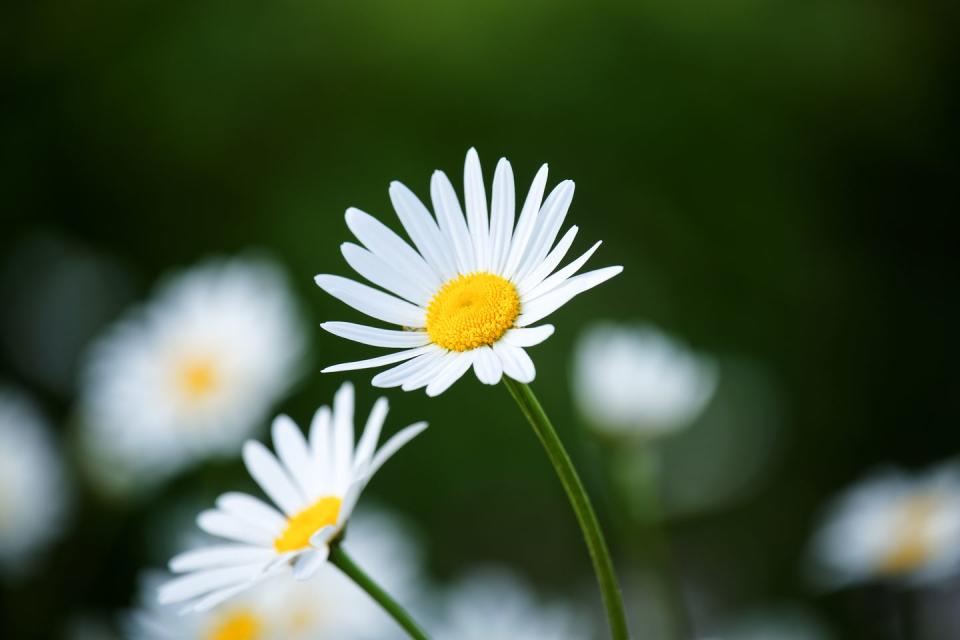
Black-Eyed Susans
Consider Black-eyed Susans the cousin to the white and yellow daisy. “Black-eyed Susans are hardy plants that produce golden yellow flower faces with dark brown centers throughout the summer,” Hyland says.

Lilies
Lilies come in a range of colors and have a distinctly sweet scent. “Lilies offer an array of color choices with classic tulip shapes,” Hyland says.
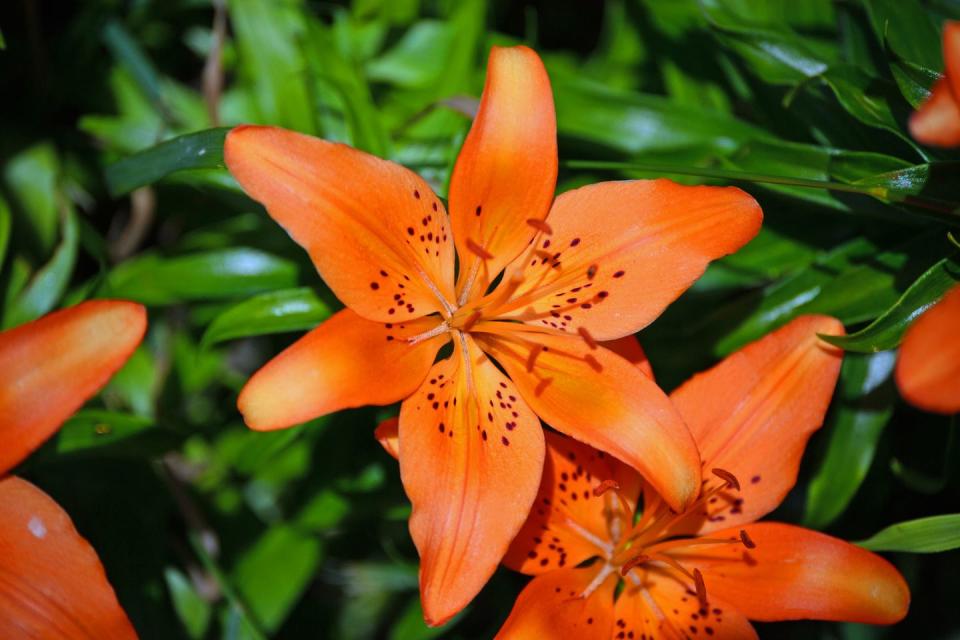
Peonies
Like lilies, peonies have a unique scent—they’re also great in bouquets. “Peonies bring large frilly blooms in white and shades of pink,” Hyland says.

False Blue Indigo
False blue indigo, aka wild blue indigo, is a large perennial, with dense clusters of deep blue-purplish flowers on long stem. Carignan lists these off as a favorite.

Purple Coneflowers
These pretty wildflowers look like purple-tinged daisies, and they tend to bloom in mid- to late-summer. Carignan says they’re “a great addition” to gardens.

Foxglove
The name is admittedly odd, but these perennials create striking pink and white flowers, depending on which type you choose. That’s why Carignan says they’re one of her favorites to plant.
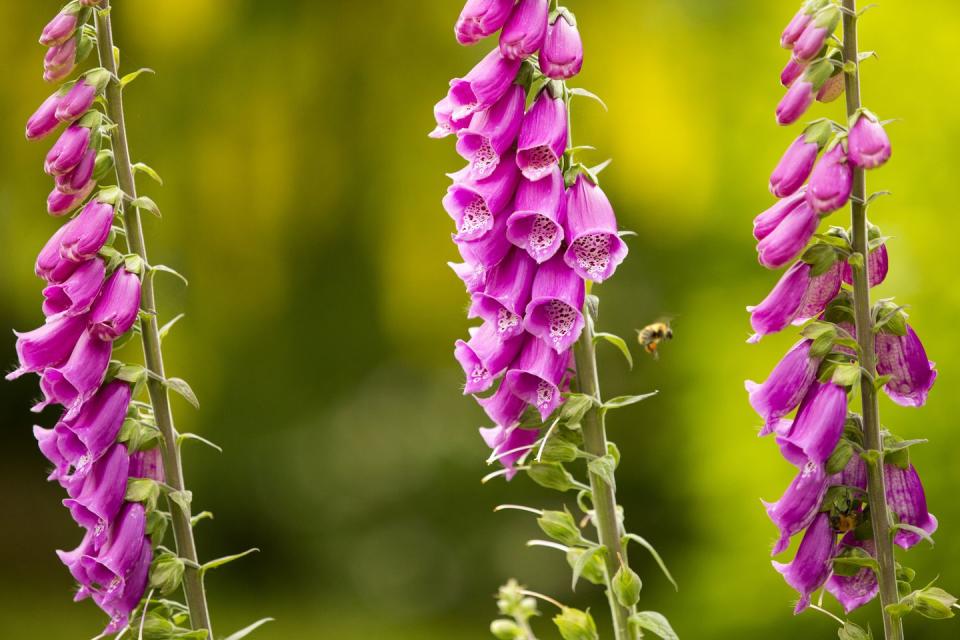
Coreopsis
Aka Tickseed, Coreopsis flowers have a daisy-like appearance with foliage that smells a little like licorice. Carignan says they’re a good addition to gardens.

Bee Balm
Bee Balm is known for its unique appearance and sweet scent. “Bee balm is great—a lot of hummingbirds and bees like it,” Carignan says.
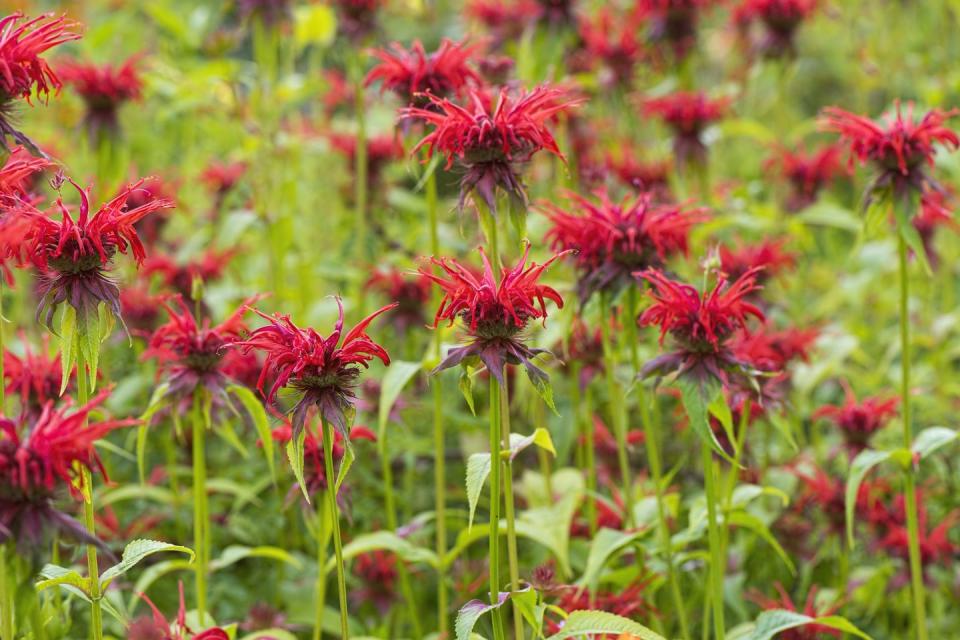
Asters
Asters have a yellow center with pretty purple petals that bloom from late summer through early fall. “They’re beautiful in the fall and important for migrating butterflies,” Carignan says.

Joe Pye Weed
These feathery flowers—recommended by Smith—grow on long stalks and bloom in early fall. They also like sun and moist conditions.

Blue Giant Hyssop
This pretty plant smells like anise when it’s crushed. It’s hardy and native to a lot of north-central and northern North America, including the Great Plains.
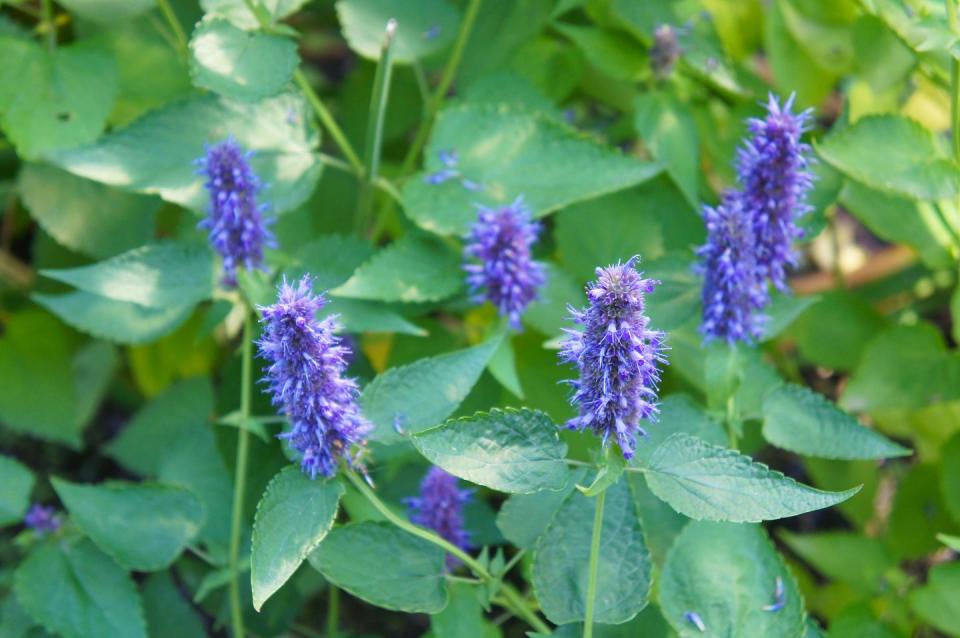
Garden Phlox
You probably recognize these gorgeous flowers, even if you don’t know them by name. Garden phlox come in a range of colors and are hardy, so you don’t have to stress about careful maintenance. Smith is a fan.
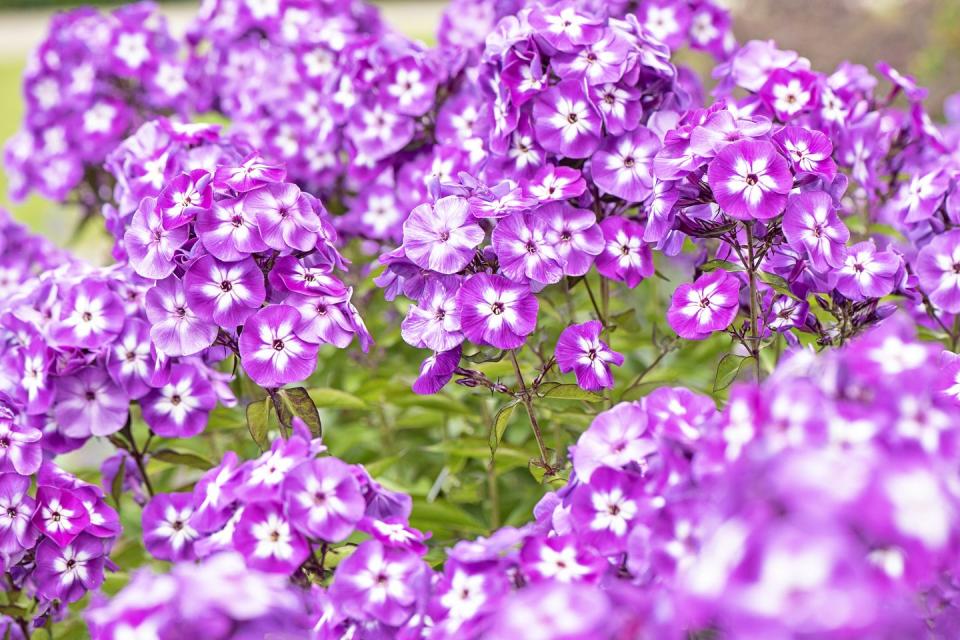
Swamp Sunflower
While the name isn’t the most appealing, these daisy-like flowers really pop in gardens. They also get really tall—they can grow up to six feet!

Guara
Also known as Whirling Butterflies, these flowers look like butterflies as they dance in the breeze. They’re native to dry areas of the south and do well in full sun.
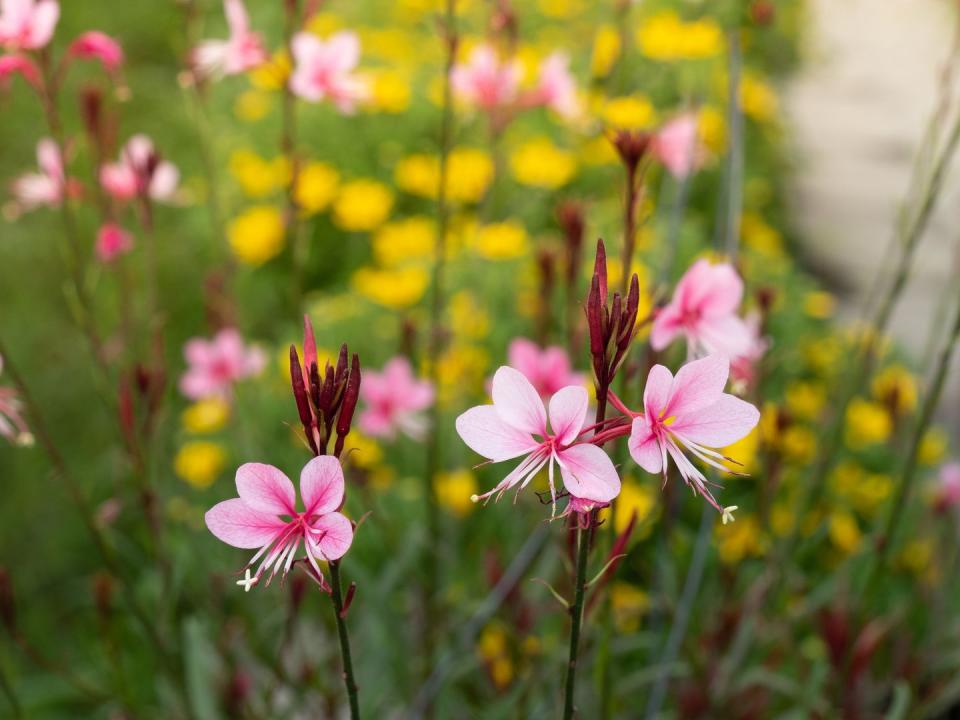
Blanket Flower
Also known as Gaillardia, these perennials are easy to grow and have bold red and yellow flowers. They love full sun.

Butterfly Weed
Love butterflies? You need this plant. Butterfly weed gets its name because it attracts butterflies. It also happens to feature bold colors that go great with just about any landscape design.

Perennial Salvias
These stunning flowers grow on a stalk and bloom in the summer—Smith lists them as a favorite. They’re also resistant to deer and rabbits, making them a good addition to your garden.
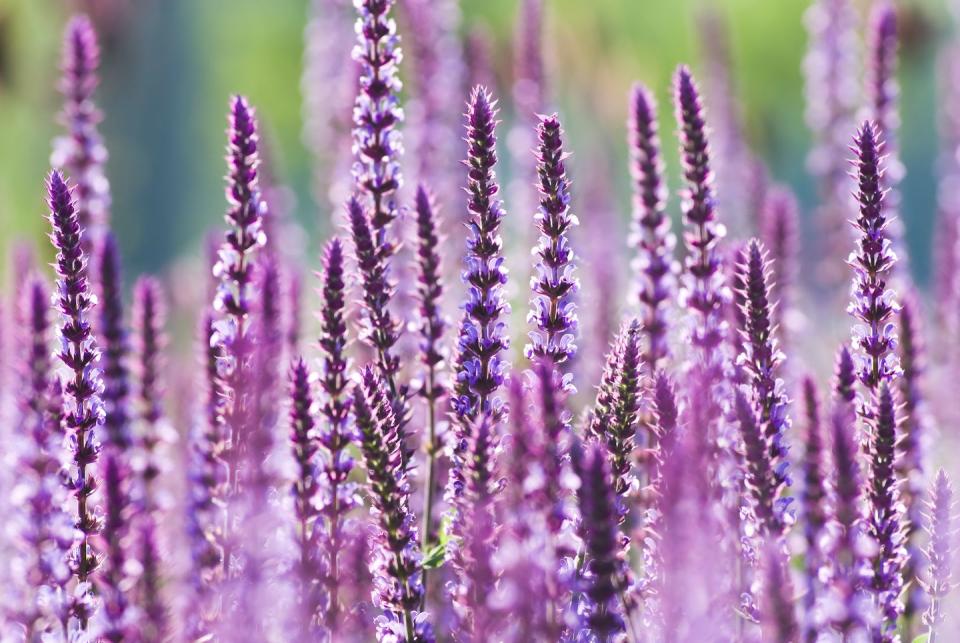
Goldenrod
Goldenrod’s bright flowers are distinctive, and the plant has plenty of fans. The flowers prefer full sun, but will still survive with partial shade.

Cheddar Pinks
Cheddar pinks bloom from May to June and feature bold, rosy flowers. These blooms have a rich scent and grow up to a foot high.

Sedum
Another Smith pick, sedum is a huge genus of flowering plants—there are hundreds of them. These plants feature clusters of blooms in a range of colors to pep up your garden.

Obedient Plant
The obedient plant, aka “false dragonhead” forms dense clumps of bright purplish-pink flowers. They can grow up to two feet tall and tend to bloom from late summer into early fall.

Barrenwort
Barrenwort flowers have a unique look that’s sometimes compared to a ship’s anchor. They feature delicate petals that come in pink, yellow, orange, white, and red.

Columbine
These gorgeous flowers have a unique shape that gives it its nickname, Granny’s Bonnet. The plant blooms in the spring and comes in a range of bold colors.

Iris
Iris’ have a distinct look that makes them a fan-favorite. These stunners come in a range of colors, including bold blues and purples. Despite their delicate appearance, they’re surprisingly hardy.
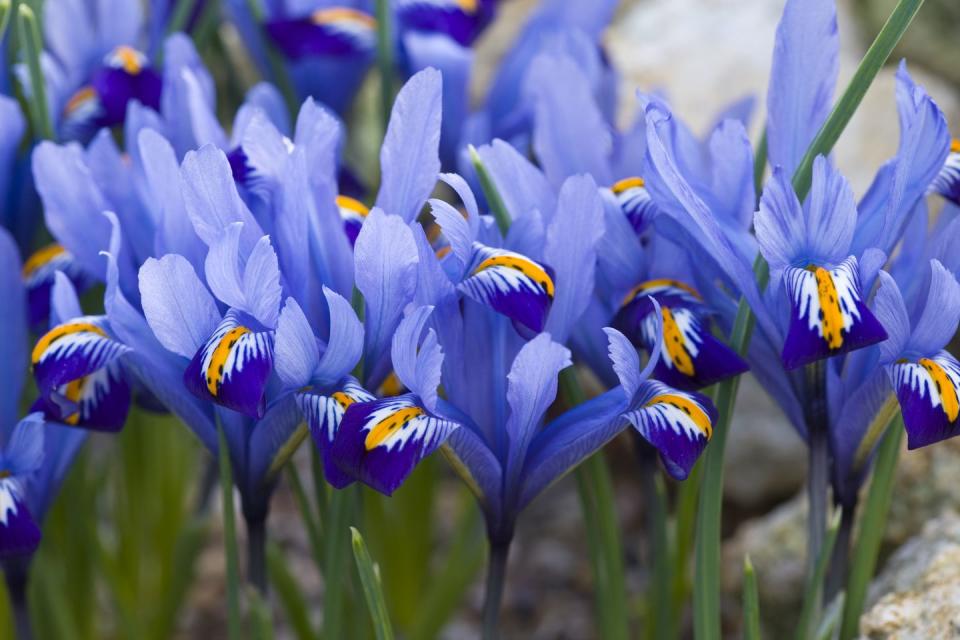
Amsonia
Amsonia flowers have a star-like shape that’s attention-grabbing. They bloom in late spring and early summer and prefer partial or full sun.
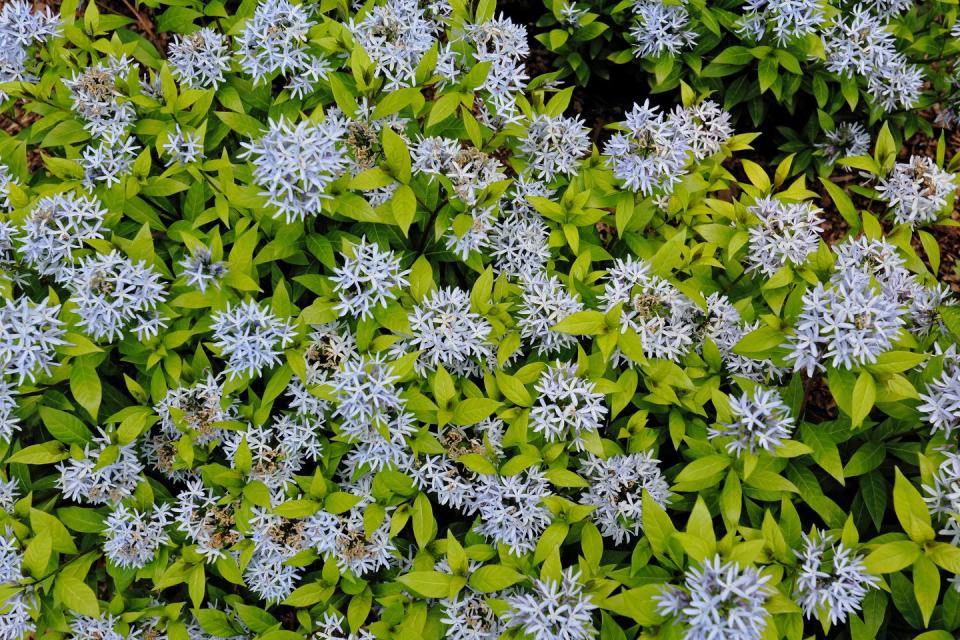
Benefits of perennials
“Perennials provide year-round color and interest, with endless variations in colors, sizes, habits, and time of bloom,” Smith says. “Although some perennials flower for only a few weeks, the ever-changing color display forms much of the excitement of a perennial garden.“They can also provide color in gardens and landscaped areas ‘without requiring replanting every year as annuals do,’” Hyland says.
Ultimately, perennials can save you money, Carignan says: “You can purchase some perennial plants and you don’t have to buy them again every year as you would with annuals.”

Meet the experts
Lindsey Hyland is founder of gardening advice website Urban Organic Yield; Barbara Smith is a consumer horticulture extension agent at the Clemson Extension Home and Garden Information Center; and Christa K. Carignan is a coordinator of digital horticulture education at University of Maryland Extension Home & Garden Information Center.

You Might Also Like

